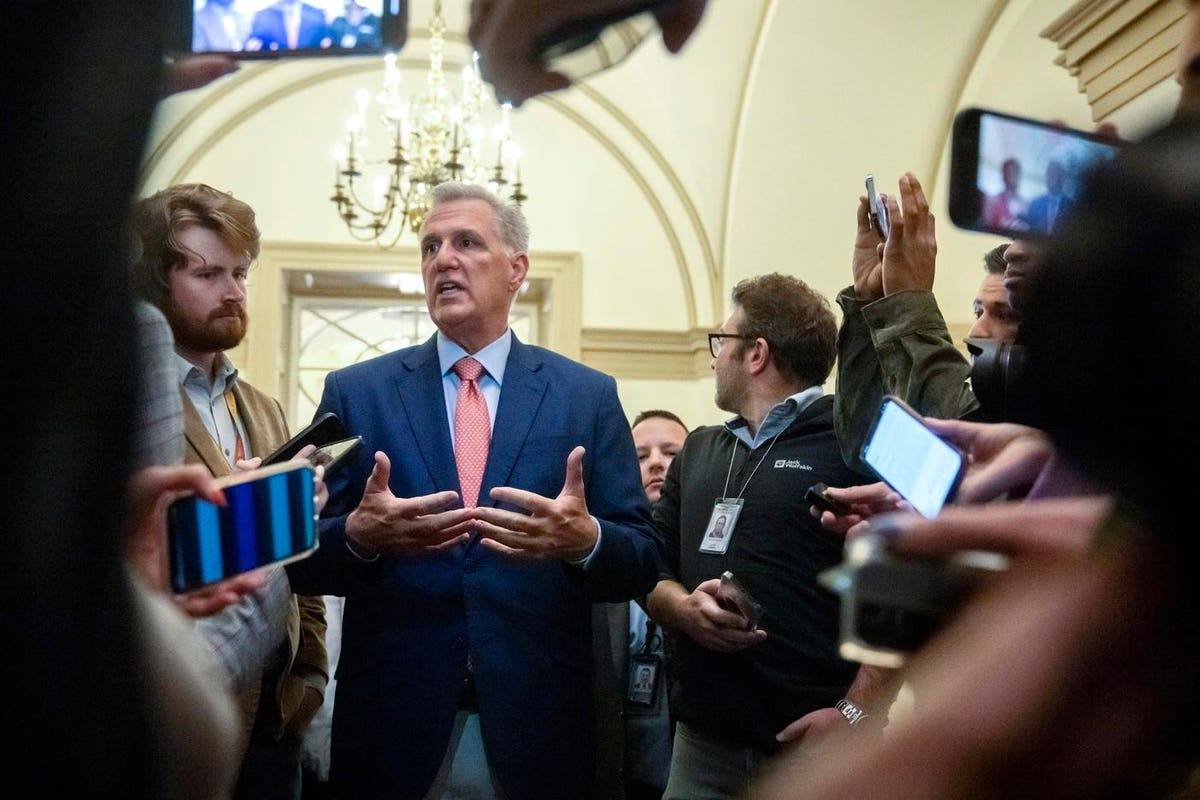If politicians aren’t able to reach a deal, then the U.S. federal government could shut down on October 1. That might temporarily dent economic growth through reduced consumer confidence, as well as disrupting defense and healthcare spending.
However, historically government shutdowns have been brief, often lasting days, and most employees receive back pay. Hence, the disruption, though considerable, is insufficient to prompt a recession, if history is any guide. Also, the vast majority of government employees are employed by the state and local government, which are generally far less impacted by shutdowns at the federal level.
Still the uncertainty could weigh on the economy, but that may be against a backdrop of relatively strong growth. For the third quarter, growth is forecast to be strong according to the latest perspective of forecasters and nowcasts. Recent quarterly estimates have Q3 growth topping 3%, which is relatively high. It’s unlikely a government shutdown in isolation, unless extremely drawn out, could prompt a recession from such high levels of growth.
Missing Economic Data
Ironically, a shutdown may also see a delay or gaps in provision of key economic data releases from the government used to measure and forecast growth and unemployment. During a shutdown economic forecasting would become more challenging. That’s especially true at a time when the Fed has stressed the data dependence of its next decision in interest rates.
The October 1 Deadline
October 1 is the start of the government’s fiscal year. If no political deal is reached by then, then the federal government would shutdown. Of course, politicians continue to discuss plans to pass a budget and avert a shutdown, but time is running out and the risk of a shutdown is real. Also, the current political gridlock where Republicans and Democrats split control of Congress, has historically made government shutdowns more likely, even without internal divisions within Republican ranks.
That means a shutdown could occur at the start of the forth quarter for the U.S. economy. When we factors in other economic risks such as the resumption of student loan repayments, rising energy costs and the ongoing UAW strike, it’s possible that growth could weaken due to a host of one-off factors in combination, though a government shutdown would only be a contributing factor in such a scenario.
Impact On Employees and Contractors
Many Americans are employed by the U.S. federal government and many more hold positions that are funded, directly or indirectly by government spending. Fortunately, those directly employed by the U.S. federal government will receive back pay when the shutdown ends.
However, even a delayed paycheck can be extremely disruptive for household budgets. That disruption could easily create a drag on consumer spending. The situation for government contractors is potentially worse with no guarantee of pay back after the shutdown ends, so government contractors, dependent on their specific situation, could see a permanent loss of earnings for the duration of any shutdown.
Sector Impacts
Work in defense and healthcare is often tied closely to government funding. Therefore, any government shutdown could have a material impact on these sectors to the extent that work and associated payment is disrupted or delayed.
The Length of Any Shutdown
The length of a shutdown is impossible to predict, though in recent years shutdowns have tended to last slightly longer. That’s in part because various steps have been taken over time to preserve the critical functions of government during a shutdown. That makes shutdowns somewhat more manageable for those outside the government, even if delays at airport screening occur and the National Parks are disrupted. In historical terms a shutdown of a few days is most common and any shutdown lasting more than two weeks is rare.
Ultimately, a government shutdown would be a drag on the economy, but given its temporary nature, it would likely take additional factors to produce a recession, especially against a backdrop of Q3 growth that appears robust on most recent estimates.
Read the full article here


